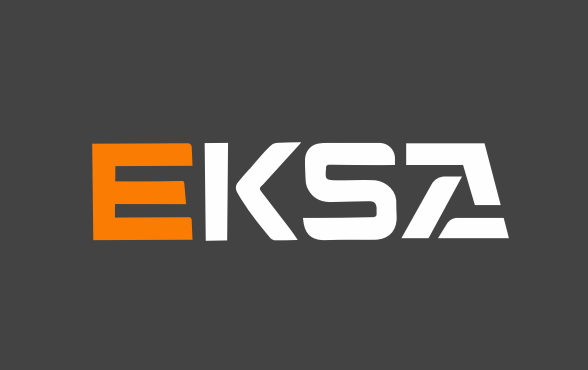Expert Corner
Cool Trips and Tricks from our Experts
-
1. Choose the Right Storage for Your Needs
NVMe vs. SATA SSDs: If speed is your top priority, choose an NVMe SSD over a SATA SSD. NVMe SSDs leverage the PCIe interface, which offers significantly higher read/write speeds compared to SATA drives. For gaming, content creation, or any data-intensive tasks, an NVMe SSD is the best choice.
Storage Capacity: Always aim for an SSD with slightly more capacity than your immediate need. SSDs tend to slow down when nearly full, so having extra space can maintain optimal performance.2. Keep Your Firmware Up to Date
Manufacturers frequently release firmware updates that can improve performance and stability. Check your SSD or flash memory manufacturer’s website periodically for firmware updates. Updating your firmware is simple and can provide speed improvements or fix minor bugs.
Steps: Visit the Eksza website, go to the support page, and download the latest firmware for your device. Follow the on-screen instructions to install.3. Enable TRIM Support (For SSDs)
TRIM is an essential feature for SSDs that allows your operating system to inform the SSD which data blocks are no longer in use, thus improving performance and extending the drive’s lifespan.
How to Enable TRIM on Windows:
1. Open Command Prompt as an Administrator.
2. Type: fsutil behavior set DisableDeleteNotify 0.
3. Press Enter.4. Keep Your Storage Device Cool
Heat can significantly reduce the performance and lifespan of your storage devices. Ensure your system has adequate ventilation and, if possible, place your storage devices in well-ventilated areas. For high-performance gaming PCs, consider using heatsinks on your SSDs to dissipate heat more effectively.
5. Avoid Overfilling Your SSD
Leaving 10-20% of your SSD capacity free is crucial to ensure optimal performance. When an SSD is nearly full, it can slow down significantly due to the way data is stored. Maintaining free space allows the SSD to manage data more efficiently.
6. Enable AHCI Mode for SSDs
If you are using an SSD with a SATA interface, make sure that AHCI mode is enabled in your BIOS settings. AHCI (Advanced Host Controller Interface) allows for faster data transfer and supports features like NCQ (Native Command Queuing) and TRIM, which enhance SSD performance.
How to Enable AHCI:
1. Enter your computer’s BIOS by pressing F2 or Delete during boot-up.
2. Find the SATA configuration settings and select AHCI mode.
3. Save and exit the BIOS.7. Regularly Update Your Operating System
Operating system updates often include performance improvements for storage devices. For example, modern versions of Windows 10 and Windows 11 have built-in optimization for SSDs, like auto-enabling TRIM. Make sure you are running the latest OS version to take advantage of these features.
8. Disable Indexing on Your SSD
While indexing helps speed up search operations on hard drives, it can slow down SSDs by causing unnecessary writes. By disabling indexing on your SSD, you can reduce wear and improve overall performance.
How to Disable Indexing in Windows:
1. Right-click on your SSD drive in This PC.
2. Click on Properties.
3. Uncheck “Allow files on this drive to have contents indexed”.
4. Apply changes to all files and subfolders.9. Defragment vs. Optimize: Use the Right Tool
Do not defragment SSDs: SSDs do not benefit from defragmentation, and it can actually shorten their lifespan by causing unnecessary write cycles. Instead, use Windows Optimize Drives tool which is designed to optimize SSD performance without the risks of defragmentation.
How to Optimize SSD in Windows:
1. Go to Start and type “Defragment and Optimize Drives”.
2. Select your SSD and click Optimize. Windows will run its TRIM function to ensure efficient SSD management.10. Use High-Quality Storage Devices
Investing in a reputable brand like Eksza ensures your storage devices are built with quality components and are optimized for speed and longevity. Cheaper, unreliable drives may suffer from performance issues and shorter lifespans.
11. Monitor Your SSD Health
Monitoring the health of your SSD is essential to avoid sudden failure. Use tools like CrystalDiskInfo or the software provided by the SSD manufacturer to check the health status of your drive. Regular monitoring can alert you to potential problems early.
What to Monitor: Keep an eye on SSD temperatures, total bytes written (TBW), and the remaining life percentage as indicated by the SSD management tool.12. Back Up Regularly
Even with the best-performing storage, failures can happen. Regularly back up your important data to an external storage device or cloud-based service. This is especially important if you work with sensitive or irreplaceable data.
Conclusion: Your Storage Device, Optimized
By following these tips, you can ensure that your SSDs and other storage devices are operating at peak performance for years to come. Remember, at Eksza, we’re committed to delivering not only high-performance products but also the knowledge and support you need to get the best out of your investment.
